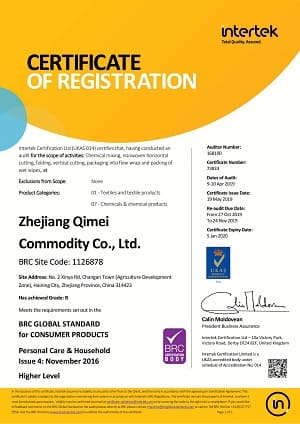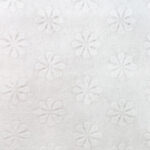Spunlace-Vliesstofftyp: Polyester, Poly-Viskose-Mischmaterial, Bambusfaser, Holzzellstoff (spülbar), Baumwolle oder Sojafaser (biologisch abbaubar)
Flach oder strukturiert (Ihr eigenes LOGO ist verfügbar)
Grammatur: 30–80 g/m²
1/10/30/80/100/120/160 Stück/Packung
Kleine Größe: Diese sind normalerweise ca. 15 cm x 20 cm (6 Zoll x 8 Zoll) und sind für das Reisen oder die Reinigung kleiner Bereiche wie Pfoten oder Ohren bequem.
Standardgröße: Diese sind normalerweise etwa 20 cm x 20 cm (8 Zoll x 8 Zoll) und sind für die tägliche Reinigung und Pflege geeignet.
Große Größe: Diese sind normalerweise etwa 30 cm x 30 cm (12 Zoll x 12 Zoll) und eignen sich zum Reinigen größerer Bereiche oder zum Einsatz in Baden und Pflege.
Extra-große Größe: Diese sind normalerweise etwa 40 cm x 40 cm (16 Zoll x 16 Zoll) und eignen sich zum Reinigen sehr großer Bereiche oder zum Einsatz bei Baden und Pflege.
1. Wiederverschließbarer Plastikbeutel: Dies ist die häufigste Art der Verpackung von Feuchttüchern. Es besteht aus Kunststoff und hat oben einen wiederverschließbaren Streifen, um die Tücher frisch und feucht zu halten.
2. Flip-Top-Deckelbehälter: Diese Verpackungsart besteht aus einem Kunststoffbehälter mit einem Flip-Top-Deckel, der geöffnet und geschlossen werden kann, um an die Tücher zu gelangen.
3. Softpack mit Flip-Top-Deckel aus Kunststoff: Ähnlich wie der Flip-Top-Deckelbehälter wird diese Verpackung in einem Softpack geliefert und hat einen Flip-Top-Deckel aus Kunststoff für einfachen Zugriff.
4. Pop-up-Spender: Diese Verpackungsart verfügt über einen Pop-up-Spendermechanismus, der jeweils ein Tuch herauszieht.
5. Reisepaket: Eine kleine Verpackung für unterwegs, oft mit einem Schnappverschluss aus Kunststoff.
6. Einwegverpackung: Diese Feuchttücher werden in kleinen, versiegelten Päckchen geliefert, die praktisch für Reisen oder Outdoor-Aktivitäten sind.
7. Nachfüllbeutel: Diese größere Verpackung dient zum Nachfüllen anderer Feuchttuchbehälter und hat normalerweise eine wiederverschließbare Öffnung.
Gereinigtes Wasser: Dies ist der Hauptbestandteil in den meisten Tüchern der Haustierpflege und wird als Lösungsmittel verwendet, um die anderen Zutaten aufzulösen und zu zerstreuen.
Natürliche Extrakte: Einige Marken können natürliche Extrakte wie Aloe Vera, Kamille und Lavendel umfassen, um Haut und Fell zu beruhigen und zu befeuchten.
Leichte Tenside: Dies sind Inhaltsstoffe, die dazu beitragen, Haut und Fell zu reinigen, ohne Reizungen zu verursachen. Einige Beispiele für milde Tenside, die in PET -Pflegetüchern verwendet werden, sind Kokamidopropylbetain und Natriumlaurylglucose -Carboxylat.
Emollients: Dies sind Zutaten, die dazu beitragen, Haut und Fell wie Glycerin, Panthenol und Allantoin zu erweichen und zu glätten.
Deodorierer: Dies sind Zutaten, die dazu beitragen, Gerüche zu neutralisieren und Haustiere frisch riechen zu lassen. Einige Beispiele für Deodorisierer, die in Pet -Care -Tüchern verwendet werden, sind Backpulver- und Zitrusextrakte.
Konservierungsstoffe: Diese werden verwendet, um Bakterienwachstum zu verhindern und die Haltbarkeit der Tücher zu verlängern. Gemeinsame Konservierungsstoffe, die in Pet -Care -Tüchern verwendet werden, umfassen Phenoxyethanol und Natriumbenzoat.
ISO 9001: Diese Zertifizierung stellt sicher, dass der Hersteller ein Qualitätsmanagementsystem eingerichtet hat, das internationale Standards entspricht.
ISO 14001: Diese Zertifizierung zeigt, dass der Hersteller ein effektives Umweltmanagementsystem implementiert hat und sich verpflichtet hat, seine Auswirkungen auf die Umwelt zu minimieren.
FSC: Die Zertifizierung des Forest Stewardship Council (FSC) stellt sicher, dass die für die Herstellung der Wischteile verwendeten Materialien aus verantwortungsbewusst verwalteten Wäldern stammen, die soziale und ökologische Standards entsprechen.
FDA: Die FDA -Zertifizierung der US -amerikanischen Food and Drug Administration (Food and Drug Administration) stellt sicher, dass die Tücher für Haustierpflege die Sicherheits- und Wirksamkeitsstandards für die Verwendung bei Tieren entsprechen.
ECOCERT: Diese Zertifizierung stellt sicher, dass die in der Herstellung der Tücher verwendeten Materialien organisch und frei von schädlichen Chemikalien sind.
BSCI: Die BSCI -Zertifizierung (Business Social Compliance Initiative) stellt sicher, dass der Hersteller die Verbesserung der Arbeitsbedingungen und die Umsetzung ethischer Geschäftspraktiken verpflichtet hat.











